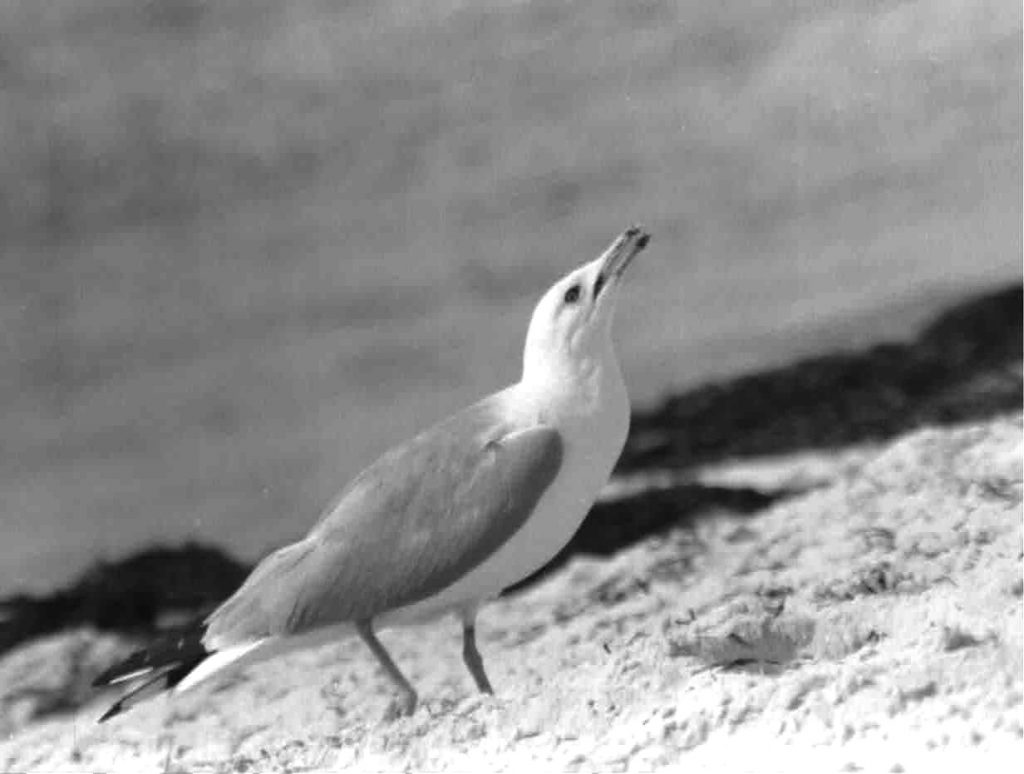
I grew up and lived most of my life in places frequented by seagulls. I could be amused watching their antics, and moments later aggravated seeing what they’ve done: amused watching them fight with—and over—a scrunched up fast food bag they plucked out of a trash can because they could smell a few french fries in it, aggravated when they left the shredded remains of the bag and its contents all over the place when they were done; amused as they stand on the hood of the car looking in the windshield while we had our Saturday morning coffee and pastry at the waterfront, aggravated when they left a “present” on the hood of the car before they flew off; amused as they sing out to other nearby gulls with sounds that Hollywood interprets as “mine, mine” but never quite aggravated by their songs.

They’re birds, seemingly always hungry but not particularly fearful birds. They’re scavengers, not particularly fussy about what they eat. Anyone who has left food out on their beach blanket—by “out” I mean not in a cooler with a secure latch—while they went for a quick swim in the ocean knows that.

But there’s more to them, too. Ever since I read Richard Bach’s Johnathan Livingston Seagull, I’ve looked at seagulls differently. Some of them have higher aspirations appropriate to their nature: they want to fly higher, faster, and more gracefully than others; they want to fly to distant lands; they start wanting to know everything about flying. These gulls end up learning more about themselves and the world around them.
And if the flock in its resistance to new things casts out those who want to fly higher and faster, it is the gulls in the flock who lose out. Until the cast-out gulls, having achieved a higher level of self-knowledge, return to enlighten others from the flock who want to learn more about flying and about themselves.

And so I offer a small tribute to seagulls everywhere, in all of their amusing, aggravating, food scavenging, singing, soaring, air current-riding, and inspiring wonder.
